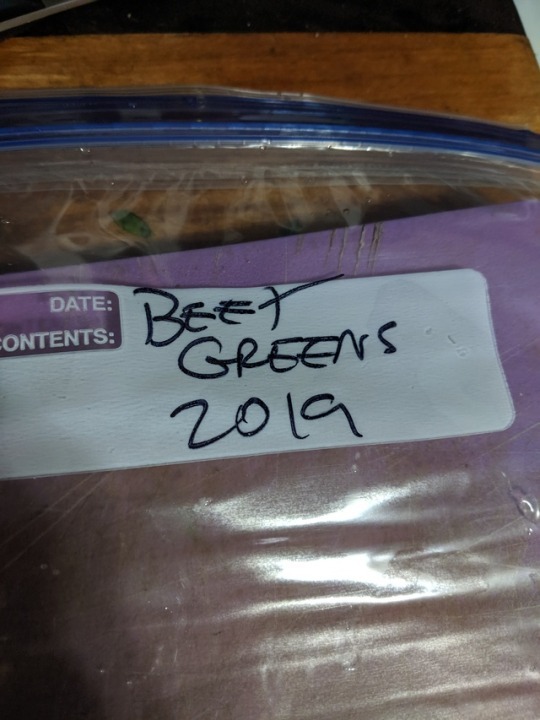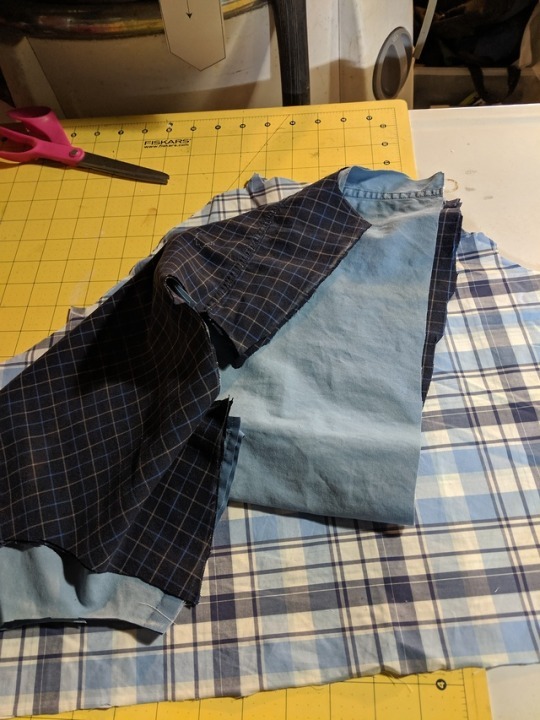via
https://ift.tt/2nbclqwOne of the things I do at the farm is take over preserving excess harvested vegetables so the busy farmers don’t have to stay up late and do it. It’s one of those tasks it’s hard to find time for. Farmsister and VegMan are both expert canners, but the unskilled drudge labor of freezing often falls to me. (There have been jokes about calling me The Freezer.)
Freezing vegetables is super super easy and you can do it in small batches– like, huh these carrots are about to go off, I only used three out of the bunch and I’ll never get through them before they go the rest of the way wrinkly or get slimy–
Wash them, peel them if you’re into that, chop them, put them in a quart Ziploc freezer bag or cram them into an old plastic container you washed out but didn’t recycle yet. Put into freezer. Wham, bam, you’re set, now you have frozen carrots to use at your leisure sometime in the next six months to a year. This works for peppers, onions, celery– you could even make a mirepoix and freeze blends of this stuff, if that’s how you use it most often.
I always just Google the thing I’m about to preserve. Some stuff– spinach, beet greens, Swiss chard, snow peas– you have to blanch first. This is because there are enzymes in them that freezing will not stop, and they’ll keep breaking the food down. Boiling will stop them, and so when you defrost your frozen thing, they’ll come out mushy-cooked, not gooey-gross.
Some things you cook down to save space. Tomatoes, you cook down first, because they’re mostly water and you can save a ton of room by only preserving the part of the tomatoes that’s tomato, not the water. Some things you cook down because it’s the most sensible way of preserving them– like winter squash, which you can store for ages but when you think it’s gonna mold, roast it first and scrape the pulp into a baggie or a container of some kind, and freeze that. Eggplant, you have to cook before freezing because it will just be mush and cooked mush is usable while raw mush is just kind of gooey and nasty. A lot of stuff just tastes better roasted, and freezing is a method of cooking– it breaks down things– so it’s better to have it cooked the way you wanted, and then cooked a bit more by the freezer, than to be trying to cook it how you like after the freezer’s already broken it down.
A CSA customer was telling us she freezes raw cabbage, and then when she thaws it, it’s cooked enough that she can use it to make cabbage rolls with. She just throws it right in the freezer whole and chops it afterward, and then she doesn’t have to boil it for the cabbage rolls. We all were boggled by this, but I haven’t yet tried it myself, so if you do, let me know how it worked.
I guess you can freeze zucchini chopped in pieces and blanched, if you want to eat it in stir-fries later, but you can also just grate it raw into baggies if you’re going to use it for bread etc. later.
This is the kind of stuff gardeners know about, homesteading types and such. But I’m telling you, yes you, apartment dweller, who cooks for one or two– you can do this too. Don’t feel shut out from a CSA share or loading up on amazing fresh in-season shit at the farmer’s market just because you tried it and then had to throw out a bunch of moldy wilted stuff later. No! Get it, get the annoyingly-sized box for four adults, and figure right away that you’re going to eat maybe a quarter of it now, and freeze the rest. Do it. You can do it!
(Another trend worth noting: most CSAs won’t give you a smaller box or let you customize it much [though some will! worth asking!] but many many many will let you get a half share by picking up every other week. Even more will let you sign up with another person to split the share– it’s just on you to organize it. CSA boxes do not just have to be for large families or people who cook a ton. It just takes organization and management, and you don’t have to do it yourself– you can glom onto another person to help you organize. For real, think about it.)
I have found that freezing stuff in tiny quantities means I can make my little freezer work– I just have the one that sits on top of a regular fridge, I don’t have a chest freezer, I have a tiny house and a Dude who isn’t good at meal planning.
But we have a tiny whiteboard on the outside of the freezer, and when I put stuff in there I write that it’s there, so when we’re meal planning later, we can look at the list and at least sometimes it’s up to date and we know what’s there.
He’s starting to get into pickling and fermenting vegetables, and I dunno how that’s going to go, but it’s also pretty accessible and can be done on a small scale with the shit you can’t eat fast enough and don’t want to have to throw out.
I chopped, blanched, and packaged the rest of my bunch of Swiss chard and all the greens from my beets while my Instant Pot was making me beet pilaf last night. I put the water on to boil after I sealed the lid, and I was done before the pot was. I only had one bunch of beets (it was two beets! they were huge!) and one single bunch of Swiss chard and I’d been trying all week to eat them and it was too much for two people and they were wilting in the fridge. Now I have one more two-person serving of each, for future meals when we haven’t been grocery shopping lately.
My point is– you can do it. Do that farm wife shit. Do it on your tiny scale in your tiny-ass kitchen in your little freezer in your stolen half-hour after dinner prep. Then you can buy your lush local shit at the farmer’s market with your precious little basket and all, and not have to throw most of it out and buy frozen Birdseye shit at WalMart in November.
You can do this, it is accessible to you! Maybe that seems obvious and condescending but I am saying it because I didn’t realize it until pretty recently and i feel like our generation hasn’t had the same access to this kind of knowledge as former ones. My mom froze shit all the time but my parents were borderline preppers before that was a thing, and I just plain didn’t realize I could do that shit in the suburbs. But I can! And I will.
And I do. So can you.






